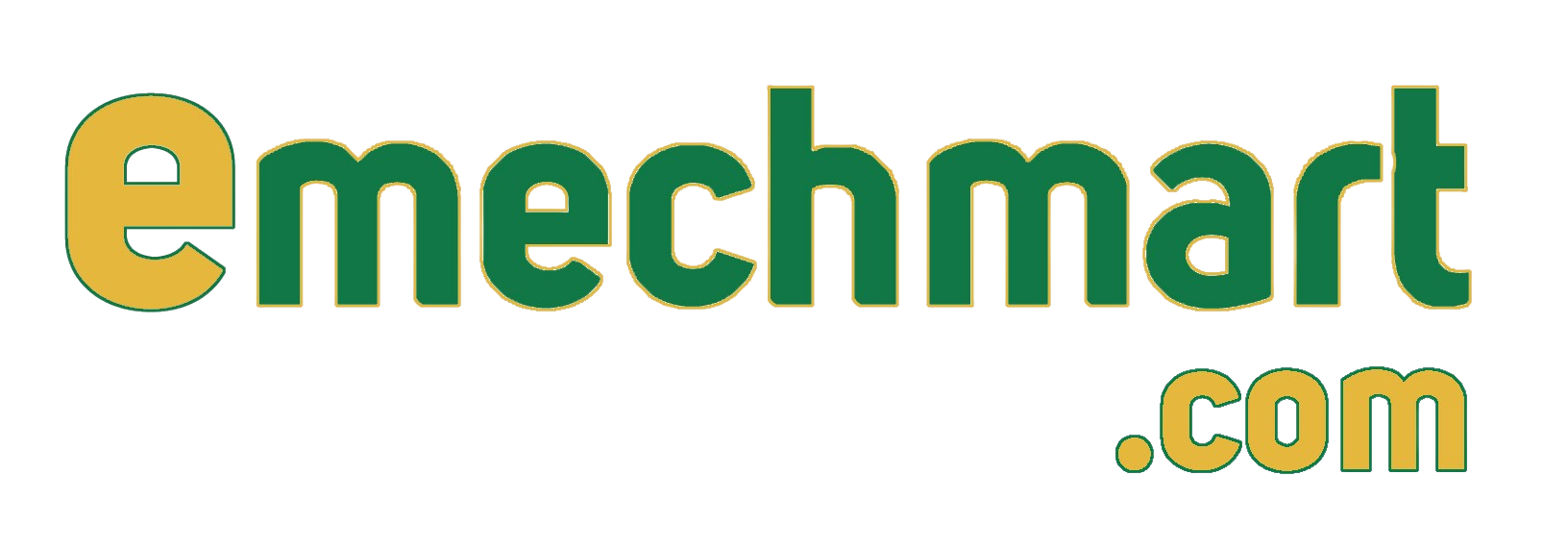An age-old craft, welding, has developed over the centuries to play a critical role in modern-day industrial processes. The process to fusion-weld two metal pieces together applying intense heat and pressure traditionally known as welding.
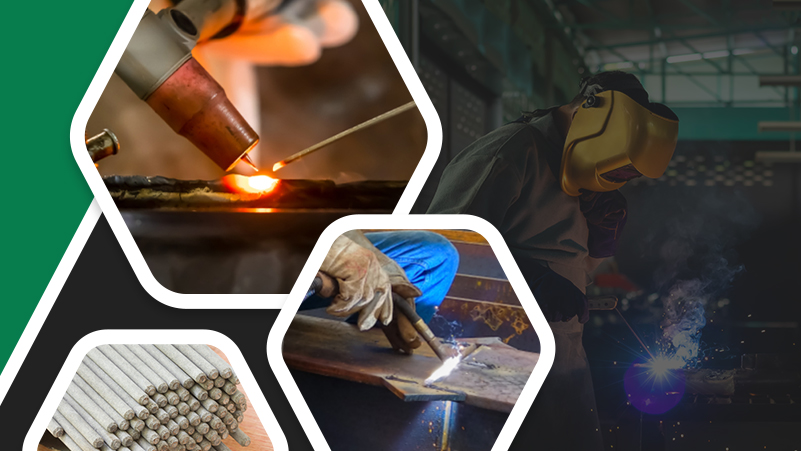
The welding rod is one of the most vital components of the welding process, as it determines the strength, longevity, and general quality of the weld. A strong and trustworthy weld can be produced by using the proper welding rod and Emechmart, while using the incorrect one can have detrimental effects on the outcome of the welding operation.
In the fields of manufacturing, construction, and repair, welding is an essential procedure. It works as filler and creates a strong and permanent joint; and helps to stabilize the arc, control the molten pool, and protects the weld from external contamination.
With the numerous types of welding rods available in the market, it is difficult, especially for novices, to choose the best one. However, by understanding the properties and characteristics of each welding rod material and types, individuals can select the best welding rod type for their particular project’s requirements.
Hence further the article will help with following categories that will help patron to choose the best welding rod types:
Common types of Welding Rods
- Shielded Metal Arc Welding (SMAW) Rods
- Gas Tungsten Arc Welding (GTAW) Rods
- Flux-Cored Arc Welding (FCAW) Rods
- Gas Metal Arc Welding (GMAW) Rods
Factors to Consider When Choosing a Welding Rod
- Types
- Thickness of Materials
- Welding position and joint configuration
- Appearance of the weld
- Cost
Let’s Roll
Common Types of Welding Rods
The unsung heroes of the welding process are the welding rods because they supply the essential filler material to adhere the metal parts together. It can be difficult to decide which welding rod to use for the particular welding needs because there are a variety of welding rods available on the market.
Nevertheless, one can choose the best welding rod for your project, though, by being aware of the characteristics and uses of the most popular varieties of welding rods.
Shielded Metal Arc Welding (SMAW) Rods
Shielded Metal Arc Welding, often known as SMAW or stick welding, is a well-liked welding technique that has been around for more than a century. The popular and adaptable welding technique known as shielded metal arc welding (SMAW) produces welds by using a disposable electrode that has been coated in flux.
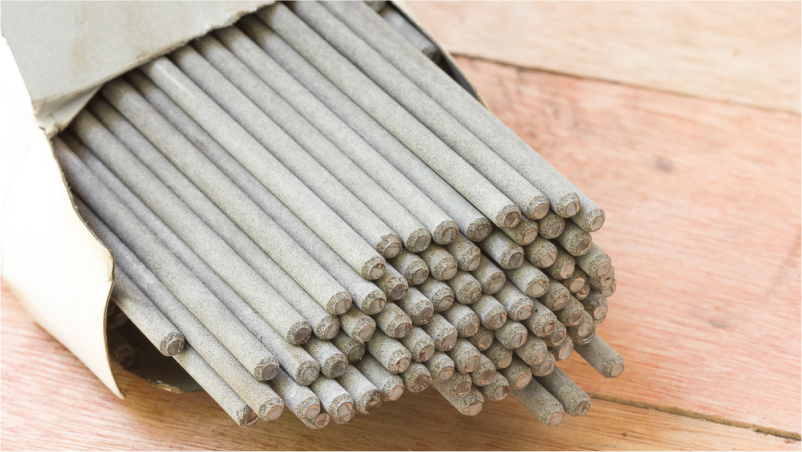
The electrode, also known as a welding rod, is composed of a metal core wire that conducts electricity and a flux coating that shields the weld from ambient pollution and gives the weld other metallurgical qualities.
Common Uses of SMAW rods
Construction: SMAW rods are frequently used in the industry to weld reinforcing bars and structural steel. This covers the welding of beams, columns, girders, and other building-related materials.
Fabrication: SMAW rods are used to weld parts and pieces of machinery, equipment, and automobiles in metal fabrication shops. This covers the welding of metal frames, brackets, and other structures.
Repair and maintenance: SMAW rods are employed in the welding of worn-out or damaged components, such as pipelines, tanks, and containers, during the repair and maintenance of machinery and equipment.
Advantages and Disadvantages of SMAW rods
| Advantages | Disadvantages |
|---|---|
| Versatile: SMAW rods can be used to weld a wide range of metals, including alloys, cast iron, carbon steel, and stainless steel. | Slow welding speed: SMAW is less effective for high-volume welding since it is a rather sluggish welding process when compared to other techniques. |
| Portable: SMAW welding equipment is light and portable, making it perfect for on-site welding applications. | Low deposition rate: SMAW requires more time to complete a weld than other techniques due to its low deposition rate. |
| Low cost: SMAW rods are an affordable solution for many applications since they are reasonably cheap when compared to other welding techniques. | Needs skill and experience: SMAW is less accessible to beginning welders since it demands a high level of both to produce high-quality welds. |
Examples of SMAW rods and their applications
SMAW rods come in a variety of varieties, each created to satisfy certain welding needs. These are a few common uses for SMAW rods and their examples:
E6010: This fast-freeze, all-position rod is frequently used for welding and repairing pipelines as well as for welding structural steel in the building sector.
E6011: This all-position rod is adaptable and may be used for both AC and DC welding. It is frequently used for general repair work as well as welding mild steel.
E6013: This is a flexible rod that may be utilized in all positions and is all-purpose. It is frequently used for general maintenance work and for welding thin sheet metal.
Gas Tungsten Arc Welding (GTAW) Rods
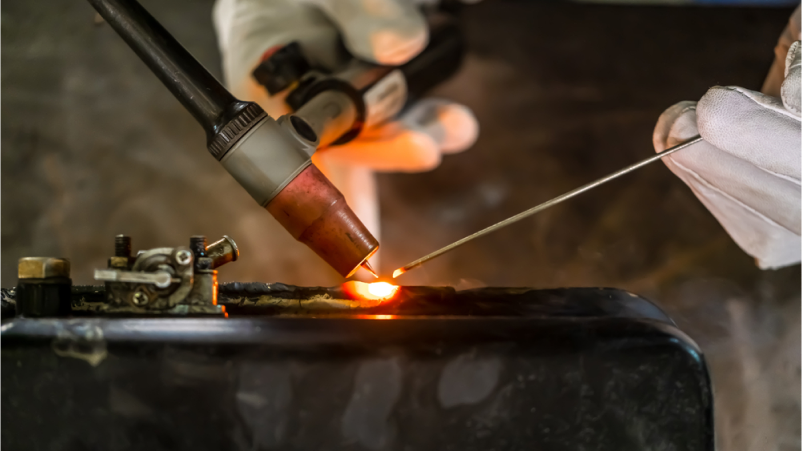
Industries that demand accurate and high-quality welding frequently use the welding technology known as gas tungsten arc welding (GTAW). GTAW welding has a reputation for producing neat, durable, and aesthetically pleasing welds on a number of metals, including copper alloys, stainless steel, and aluminum. A crucial part of this welding procedure is the use of GTAW rods, sometimes referred to as Tungsten Inert Gas (TIG) rods.
Common Uses of GTAW Rods
Aerospace Industry: In the aerospace sector, thin portions of aluminum, titanium, and magnesium alloys are frequently welded using GTAW rods. Clean and precise welds produced by the method are essential for maintaining the structural integrity and safety of aviation components.
Automotive Industry: GTAW rods are frequently used in the automotive sector to join components made of aluminum and stainless steel. It works especially well for joining body panels, engine parts, and exhaust systems.
Medical Industry: Stainless steel and titanium components are welded together in the medical sector using GTAW rods. It is very beneficial for welding implants, surgical instruments, and other medical equipment.
Advantages and Disadvantages of GTAW rods
| Advantages | Disadvantages |
|---|---|
| High-quality welds: GTAW welding is the best option for situations where look and quality are crucial because it creates high-quality, accurate welds with little distortion. | Slow welding speed: GTAW welding is a rather slow procedure, which can lead to increased labor costs and longer production periods. |
| Minimal heat input: Because GTAW welding generates little heat, there is less chance that the metal will deform, crack, or have other flaws. | High cost of the equipment: GTAW equipment tends to be more expensive than other welding equipment, making it less affordable for small firms and hobbyists. |
| Versatility: A wide variety of metals and alloys, including aluminum, stainless steel, copper, and nickel alloys, can be welded using GTAW rods. | Low penetration: GTAW welding results in low penetration, which might not be appropriate for some applications that need deeper welds. |
Examples of GTAW rods and their applications
Pure tungsten electrodes: These electrodes are used to weld non-corrosive metals like copper as well as alloys of aluminum and magnesium.
Thoriated tungsten electrodes: These electrodes are used to weld titanium, stainless steel, carbon steel, and nickel alloys because they include a small quantity of thorium oxide.
Ceriated tungsten electrodes: Electrodes made of ceriated tungsten, which include cerium oxide, are used to weld thin materials like stainless steel and aluminum.
Flux-Cored Arc Welding (FCAW) Rods
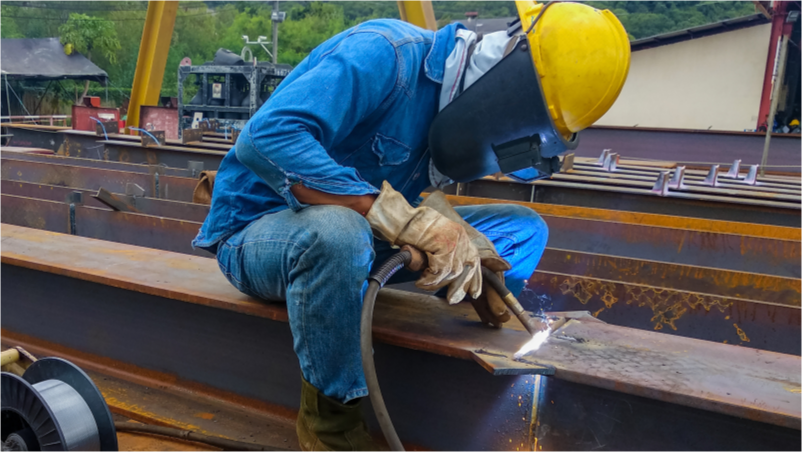
In the heavy fabrication, building, shipbuilding, and offshore industries, flux-cored arc welding (FCAW) is a common welding technique. In order to generate a shield of protection surrounding the welding area, FCAW is a type of arc welding that uses a constantly fed electrode that is covered in flux. Due to its versatility and suitability for a variety of welding applications, this technique can be used with or without an external shielding gas.
Common Uses of FCAW Rods
Shipbuilding: FCAW is frequently used in shipbuilding and maintenance because of its high deposition rate and capacity to weld thicker materials.
Pipeline welding: FCAW is used to weld pipes in the oil and gas industry because it can pass through impurities like rust, scale, and other materials.
Maintenance and repair: FCAW is also utilized in maintenance and repair tasks like welding worn-out components or fixing machines.
Advantages and Disadvantages of FCAW Rods
| Advantages | Disadvantages |
|---|---|
| Increased productivity: Because of FCAW’s rapid deposition rates, more welding may be completed in less time. | Equipment price: Compared to certain other welding techniques, FCAW requires more expensive equipment. |
| Increased productivity: Because of FCAW’s rapid deposition rates, more welding may be completed in less time. | Difficulty in welding thin materials: Thin materials are challenging to weld, and FCAW may not be the best option due to its high heat input. |
| Deep penetration: FCAW rods’ flux produces a weld with deep penetration that is appropriate for thicker materials. | Removal of slag: Slag generated during the welding process needs to be removed after welding, which can be time-consuming and increase the project’s ultimate cost. |
Examples of FCAW rods and their applications
E71T-1: This all-purpose FCAW rod can be used to weld mild steel using Flux-core arc welding machines in demanding fabrication, building, and shipbuilding applications.
E71T-8: This FCAW rod is extensively used in the manufacture of pressure vessels and structural steel and is intended for welding low alloy steels.
E309LT-1: This FCAW rod is used frequently in the food processing and chemical industries since it is designed for welding stainless steel.
Gas Metal Arc Welding (GMAW) Rods
Gas Tungsten Arc Welding (GTAW), also known as Tungsten Inert Gas (TIG) welding, is a welding process that uses a non-consumable tungsten electrode and a shielding gas to protect the weld from contamination. GTAW rods are frequently used in industries including aerospace, nuclear, and pharmaceuticals where accuracy and quality are crucial requirements.
Because these industries frequently need welds that adhere to rigorous criteria for strength, purity, and cleanliness, GTAW is a popular option because it can create clean, exact welds without the need for a lot of heat input.
Common Uses of GTAW rods
Stainless Steel Welding: GTAW rods are frequently used for welding stainless steel, which calls for a precise and tidy weld.
Aluminum Welding: GTAW rods are also frequently used for welding aluminum, which calls for a deft touch and exact temperature control.
Titanium Welding: Titanium is a difficult material to work with due to its high melting point and reactivity, hence GTAW rods are frequently used for welding titanium.
Advantages and Disadvantages of GTAW rods
| Advantages | Disadvantages |
|---|---|
| High-Quality Welds: GTAW welding results in high-quality welds that are exact, distortion-free, and clean. | Equipment Cost: Specialized equipment, like a TIG welder, is needed for GTAW welding and can be expensive to buy and maintain. |
| Versatility: TAW welding can be applied to a wide range of materials, including copper alloys, stainless steel, aluminum, and titanium. | Limited Weld Depth: GTAW welding has a limited weld depth, making it challenging to weld thick materials or connections that need deep penetration. |
| Low Heat Input: GTAW welding employs a low heat input, making it perfect for welding thin materials or heat-sensitive materials, such heat-treated metals. | Time-consuming: GTAW welding is a labor-intensive method that requires extensive training and expertise to complete properly. |
Examples of GMAW rods and their applications
ER70S-6: The well-liked all-purpose GMAW rod ER70S-6 is excellent for welding mild steel. It has a wide range of uses, including manufacturing, building, and vehicle repair.
ER4043: Used frequently in the automobile industry for producing and repairing aluminum body panels, this GMAW rod is made for welding aluminum alloys.
E71T-1: This flux-cored GMAW rod, designated E71T-1, is appropriate for welding carbon steel in demanding situations including shipbuilding, structural welding, and pipeline welding.
Factors to Consider When Choosing a Welding Rod
Types: For various welding purposes, various welding rod kinds are available, each with its own special qualities and attributes. Below are some examples of typical welding rod types:
Cast iron welding rod: Cast iron welding rods are designed for welding cast iron since cast iron is known for its brittleness and difficulty to weld. The strong link between the cast iron and the weld is created by the high nickel content and distinctive coating of these rods.
Hard facing welding rod: Hard facing welding rods can be used to create a wear-resistant surface for metal components that experience substantial wear and tear. These rods have a high chromium concentration and are extensively utilised in the mining, construction, and agricultural industries.
Copper welding rod: Copper and copper alloys, as well as brass and bronze, can all be welded with copper welding rods. These rods are frequently used in plumbing and electrical applications where a solid, dependable connection is needed.
Stainless steel welding rod: Stainless steel welding rods are specifically designed for welding stainless steel because of its high strength and resistance to corrosion. These rods, which have a high chromium and nickel content, are frequently used in applications such as food processing, chemical processing, and marine environments.
Thickness of Materials: While selecting a welding rod, material thickness is a crucial consideration to take into account because it affects the required amperage rating of the welding rod. It may be necessary to use a welding rod with an amperage rating of 90 to 130 amps for material thicknesses between 3/16 and 1/4 inch and 130 to 160 amps for material thicknesses between 1/4 and 5/16 inch.
To prevent burning through or warping of thinner materials, welding rods with lower amperage ratings are needed. For materials with thicknesses less than 1/8 inch, for instance, a welding rod with an amperage rating of 30 to 50 amps is appropriate.
Welding position and joint configuration: While selecting a welding rod, it’s crucial to take the welding position into account because different welding rods work better in particular situations than others. The penetration, bead form, and general quality of the weld can all be impacted by the weld’s position. The four fundamental welding positions are horizontal, vertical, overhead, and flat.
Flat Position: With this setting, the weld is done on a flat surface. In the flat position, welding rods that have good penetration and wetting action are often employed.
Horizontal Position: In this setting, the workpiece’s horizontal axis is the direction in which the weld is carried out. In the horizontal position, welding rods that produce a wide, flat bead and have good fluidity are frequently used.
Vertical Position: The weld is carried out in this position vertically, either up or down. In the vertical position, welding rods that have good penetration and wetting action are often employed.
Overhead Position: With this setting, the weld is done over the welder’s head. In the overhead position, welding rods that form a slag that is simple to remove and doesn’t cause a lot of spatter are often employed.
Appearance of the weld: The appearance of the weld is one of the crucial elements that is frequently disregarded. Situations, such as those where appearance is vital or where the weld is visible and needs to seem presentable, the weld’s appearance may be crucial. The type of welding rod the user uses can significantly affect how the finished weld will look.
The type of welding rod used and the welding procedure can both have an impact on the color, texture, and strengthening of the weld. Hence it is crucial to select a welding rod that is appropriate for both the planned use of the finished product and the desired look of the weld.
Cost: The price of the welding rod must be weighed against the needs of the welding project. While it may be appealing to select a less expensive welding rod in an effort to save money, at the same time it is crucial to take the rod’s quality into account as well. Moreover, the impact of welding rod cost also depends on the type of welding rod, welding procedure, manufacturer, and the welding rod material.
Conclusion
With types of tools for Industrial use, welding rod is one of the most significant finds for manufacturing, construction, and many other different industries. Welding rods not only join the two metal pieces but it works as a bridge that connects everything the user needs to achieve more with less.
However, welding rod type depends on the uses, purpose, and need of the users. The welding rods have different purposes and uses, having in depth knowledge about the rods can help users with the right use of the rod at the right place, and with the right purpose.
